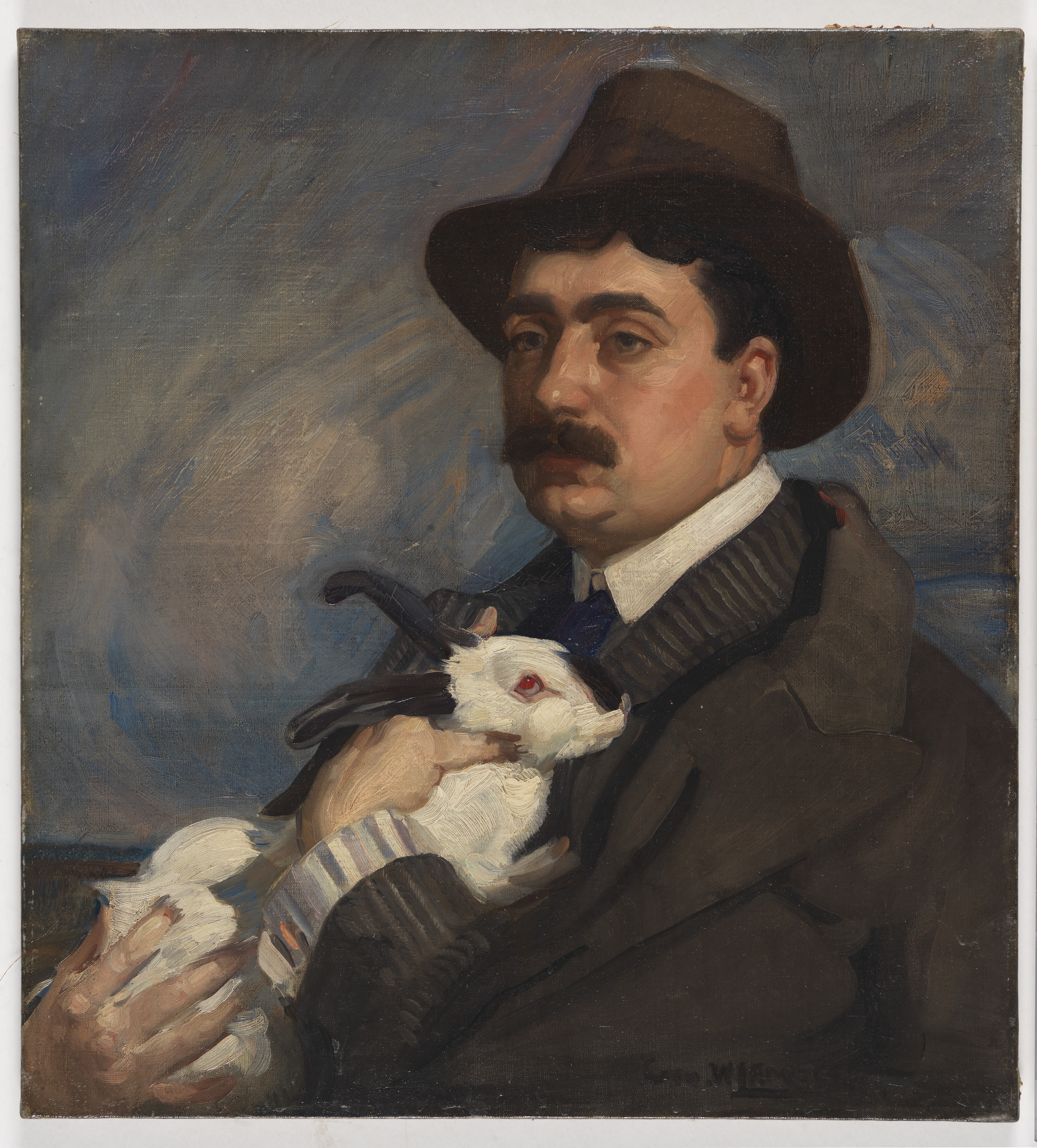One of Australia’s most influential artists, George Washington Lambert (1873–1930) was versatile, talented and prolific. His subjects ranged from striking Edwardian portraiture to iconic images of the Australian landscape, from paintings of major battles during World War I to large sculptural works created during the later years of his life.
Born in St Petersburg, Russia, Lambert migrated with his widowed mother and sisters to Sydney in 1887, where he attended Julian Ashton’s art classes. Following the award of the first New South Wales Travelling Fellowship to Europe in 1900, he spent most of the next 20 years based in London. He considered himself to be an Australian artist and finally returned in 1921.
A Man with a Rabbit is a beautifully rendered, somewhat playful portrait that is at once classically posed and relaxed — it suggests social credibility yet hints at eccentricity.
An inscription on the reverse of the canvas, dated March 1932, notes that Lambert had ‘painted a portrait group of Baroness de Neufville and two children and the “Man with the rabbit” is a portrait sketch of the Baron de Neufville’.
Painted in de Neufville’s London home, Houlgate, the painting was exhibited in the Modern Society of Portrait Painters annual exhibition in London in 1910 titled ‘Le Baron de Neufville’.
Portraiture was Lambert’s principle source of income, yet A Man with a Rabbit seems unlikely to have been a commissioned work. In her account of his career, Thirty Years of an Artist’s Life (1938), Lambert’s wife, Amy, recorded that he refused to sell the portrait to the sitter. Lambert kept the portrait until the end of his life.
A Man with a Rabbit is one of several works acquired by the State Library from Lambert’s estate in 1931.
Louise Anemaat
Executive Director, Library & Information Services and Dixson Librarian, State Library of NSW
Works in Focus More stories
Americans on campus: part of the Works in Focus series
by Elise Edmonds
Sydney Teacher’s College was co-located on the grounds of Sydney University where American Military Police units were billeted, describing the impact of the Americans on campus. Part of the Works in Focus series.
‘A degree of neatness & regularity’: part of the Works in Focus series
by Richard Neville
Sydney — Capital New South Wales was painted around 1800 — its solid buildings and carefully laid out gardens refute the idea that it was a cesspit of depravity at a time when the city was associated with 'the awful depravity of human nature'.
After life: Maurice Felton’s portrait of 21-year-old Sophia
by Margot Riley
Looking at the portrait of this young woman, so full of life, you would never think it was painted after her death. But we know the sitter, posed so serenely in this picture, had died six months before it was exhibited at the artist’s Sydney studio. Part of the Works in Focus series.
An unknown warrior: mysterious portrait of an unknown, handsome young Aboriginal man
by Ronald Briggs
This mysterious portrait of an unknown, handsome young Aboriginal man is believed to have belonged to Governor Lachlan Macquarie, described as ‘One of the NSW Aborigines befriended by Governor Macquarie’. Part of the Works in Focus series.






